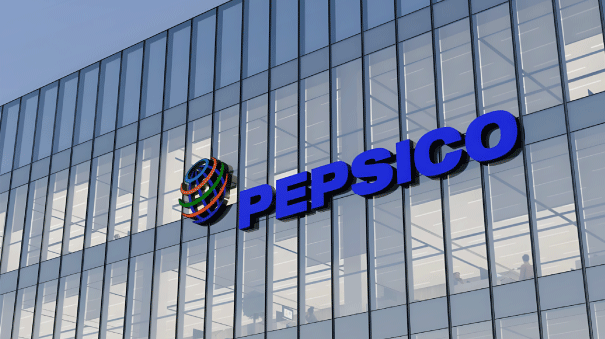Galaxy Company Overview
Galaxy Surfactants is one of the leading players in the world of Surfactants and Specialty Care Ingredients exclusively focussed on catering to the Home and Personal Care Industry. It is an Indian MNC established in the year 1980 that manufactures 200+ products catering to 1750+ customers in 80+ countries.
The process of Galaxy’s Management of Change before Wepsol Management of change (MOC) was implemented:
Galaxy needs to manage the change if there is any change required in the infrastructure level, process level or people level. The process of Management Of Change in Galaxy was quite straightforward and manual. In order for any change to happen the process involves many people within the organization from Originator to Department Heads.
The originator at Galaxy (the one who initiates the change request) has a standard format for collecting the information required relating to the particular change. This information is filled manually, and the same document is sent to the further decision makers via email. The decisions basically include – Approve, Reject & Recommend. And the decision makers are Manager of Originator, Factory Manager, Site Manager (Quality Analyst), and Department Heads. This chain of seeking approval continues until it reaches the end stage.
It is also important to note that approvals, rejections or recommendations from any stage are reverted back either via emails or by signing the hard copies. In case if any department have any recommendations to make, then they need to revert to the originator only. The originator makes the recommended changes and sends the details of change in the standard format document to all the stages seeking for approval. Once the change is approved by everyone involved in the decision making then that completes the First Cycle of Change. Now its time for implementing the change that all departments approved for.
Soon after the change implementation is done, the Second Cycle of Change begins. The second cycle is basically about communicating and seeking approval of the documents related to the change made in First Cycle. All the documents required in the Second Stage of approval are uploaded by the originator. These uploaded documents are sent via email to the same set of people or departments involved in the First Cycle.
When approved, the documents move to the next change. When rejected/resubmitted, the request goes back to the originator for making the required recommended changes. This cycle continues until all the documents are approved. Upon completion of the First Cycle (before the implementation of change) and the Second Cycle, Management of Change (after the implementation of change) is termed to be successful.
How was the Galaxy Surfactants managing the change within their organization before opting for the Wepsol MOC solution?
Galaxy Surfactants were handling all its communication manually via E-Mail. They typically used to send emails to notify of any changes by the originator and seek approval from departments heads back and forth. The supporting documents were all attached to the email and stored locally on their own devices.
What challenges were they facing?
As all the communication was done manually via emails and without any automation solution. Hence Galaxy was facing a lot of challenges:
- As all the communication between multiple people in various departments was handled via emails, it was time-consuming and inefficient.
- Every approval/disapproval of change at any stage by various departments had to be recorded manually, this delayed the process along with difficulty in deciding who is accountable for the various decisions made.
- As tracking of change was difficult, all the people involved in the Management of Change did not have a real-time update on the status.
- There was a lack of transparency in the process. The decisions made by every department and the justification involved with each approval or disapproval were not transparent and were difficult to trace.
- The documents involved in the Second Cycle of Management of Change were stored in the local system which increased the probability of losing or misplacing such important documents.
- Any retrieval of a specific document was difficult and time-consuming as document retrieval meant searching through a huge number of emails that were exchanged during the change communication process.
What were their goals?
The goals of Galaxy were –
- To automate the process of Management of Change specifically while seeking approvals for change implementation and documents management.
- To be able to store all the important documents involved in managing change in a central repository so they can access it anytime and anywhere.
- To increase the transparency of the whole process.
- To be able to track the progress of change anytime.
- Majorly save time and resources spent on the process.
How did Wepsol MOC help?
Wepsol helped the Galaxy team by managing the changes in an organization via Wepsol Management Of Change (Wepsol MOC) solution.
Wepsol MOC solution completely automated the Management of Change process at Galaxy. After implementing Wepsol MOC solution Galaxy was able to easily communicate the change to every department in the organization.
- Seeking approval or recommendations (in case of any change required) was way easier than before.
- All the departments and the people involved in the process of managing this change are now aware of the progress and are updated on a real-time basis. This transparency has helped the company to avoid any discrepancies during the later stages and maintain accountability.
- The ability to view activity history at any stage of the process makes it easier to track and approve changes. They have the ability to control changes through integrated checklists and approvals by administering roles and permissions with ease.
- All the documents involved are now stored in the centralized repository which becomes easy to retrieve whenever required. All the documents have an extra layer of security with AES 256 bits encryption which protects the important documents from possible data breach by providing authorised device access only.
Also, Wepsol provided them with powerful reports through Power BI for analyse and improvise further.
We help them maintain compliance with Management of Change requirements by allowing them to generating audit reports on various changes with a click of a button creating a traceable audit trail at every stage of the workflow.
Thus, with Wepsol MOC, Wepsol ensures to automate Management of Change in every way possible making it efficient and effortless.
Conclusion
Galaxy surfactants experienced a positive impact from the newly implemented workflows and document management system with our Wepsol MOC Solution. Over 1000 workflows were created & automated in a span of 9 months.
Analyzing the process changes & improvising has become much easier with our powerful tools. Worrying about the storage, retrieval & tracking of documents is streamlined. The control on the whole process has improved by managing the roles & permissions effectively with ease.

